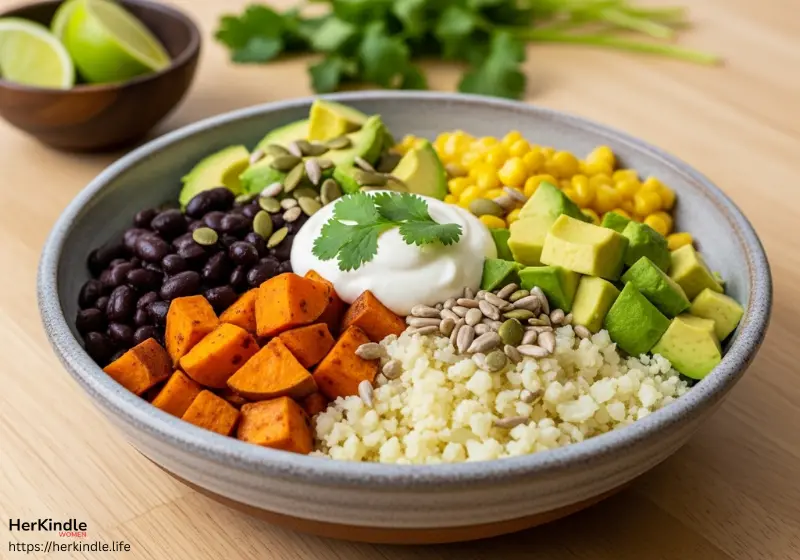Low-carbohydrate diets (LCDs) increasingly gain attention, especially among women aged 35 and above, seeking effective weight management and metabolic health improvement. By significantly reducing carbohydrate intake and increasing protein and fat consumption, these diets shift the body’s fuel source from glucose to fat, a metabolic state called ketosis. This adaptation can foster weight loss, better blood sugar control, and enhanced cardiovascular markers.
Historical Context and Modern Application
Originally used in the pre-insulin era for diabetes management, low-carb diets resurged from the 1970s, notably through the Atkins Diet. Despite the absence of a universally agreed-upon carb limit, a common definition implies carbohydrate intake below 130 grams daily (or less than 26% of total calories) [1]. Their popularity aligns with emerging research demonstrating that macronutrient ratios may affect longevity and metabolic health beyond calorie count alone.
Macronutrient Ratios in Low-Carb Diets
Typical low-carb macronutrient distributions include:
- Fat: 55–75% of total calories
- Protein: 20–30%
- Carbohydrates: 5–15%
Variations exist, from very-low-carb ketogenic plans (under 5% carbs) to moderate reductions around 40% carbs in balanced approaches.
Low-Carb Meal Planning: Strategies for Sustainable Nutrition
Creating a low carb meal plan requires tailored strategies to ensure nutritional adequacy and long-term adherence.
Essential Components
Successful plans focus on:
- Nutrient-rich protein sources such as lean meats, fish, eggs, and plant-based proteins
- Healthy fats from nuts, seeds, avocados, olive oil, and fatty fish
- Abundant non-starchy vegetables (leafy greens, broccoli, zucchini) for fiber and micronutrients
- Controlled portions of nuts, seeds, and certain low-glycemic fruits
Addressing Nutritional Challenges
Restrictive low-carb diets may omit whole grains and legumes, risking fiber and micronutrient shortfalls, notably iron in women of reproductive age. Including diverse vegetables, nuts, and seeds helps maintain gut health and prevent deficiencies.
Exploring Low-Carb Recipes: Vegan, Vegetarian, and Allergy-Friendly Options
Adopting low-carb eating does not mean sacrificing variety or taste. Diverse low carb recipes support various dietary preferences.
Low-Carb Vegan Recipes

Plant-powered recipes rich in nuts, seeds, legumes, and low-glycemic vegetables are emerging favorites. Examples include:
- Almond flour chocolate chip cookies offering protein, vitamin E, and healthy fats with low glycemic impact
- Coconut curry lentil soup providing medium-chain triglycerides, fiber, and anti-inflammatory phytonutrients
- Cauliflower rice-based meals such as vegan burrito bowls that substitute grains with nutrient-dense alternatives [2].
Low-Carb Vegetarian Dishes
Recipe collections from reputable sources like BBC Good Food include options such as autumn squash soup with chili, cinnamon apricot trail mix, and aubergine & chickpea stew. These recipes focus on plant-based proteins, healthy fats, and fiber while minimizing carbohydrates [3].
Dairy-Free and Keto Recipes
For those avoiding dairy or embracing ketogenic lifestyles, recipes like vegan chocolate ganache tarts, coconut flour pancakes, and sugar-free desserts provide indulgent yet compliant options suitable for weight management and blood sugar balance [4].
Health Benefits and Concerns of Low-Carb Diets
Established Benefits
- Weight management: Effective short-term weight loss results, possibly outperforming low-fat diets, due to reduced insulin, increased fat oxidation, and appetite suppression.
- Glycemic control: Reduced postprandial glucose spikes and improved insulin sensitivity benefit individuals with type 2 diabetes and metabolic syndrome.
- Cardiovascular health: Improved HDL cholesterol and triglyceride levels have been observed, though quality of fat intake is critical to outcomes [5].
Potential Drawbacks and Risks
- Cardiovascular concerns: High saturated fat intake from some LCDs may increase LDL cholesterol.
- Nutritional deficiencies: Restricting food groups could compromise fiber, iron (notably in women), and micronutrient status.
- Adherence challenges: Long-term compliance is variable, with many reverting to moderate carb consumption after initial phases [6].
- Short-term side effects: Ketosis may cause bad breath, fatigue, and digestive discomfort [7].
Clinical Recommendations
Healthcare providers emphasize individualized assessment, monitoring lipid profiles, micronutrients, and adapting plans based on lifestyle, metabolic health, and preferences. Collaborative and evidence-based guidance aids achieving sustainable, cardioprotective nutrition [8].
Low-Carb Alternatives for Everyday Staples
Satisfying the craving for breads, pastas, rice, and desserts without high carbohydrates is achievable with creative low-carb alternatives.
Popular Bread and Pasta Substitutes
- Bell peppers halved as sandwich vessels
- Cauliflower pizza crusts made from processed cauliflower, eggs, and seasonings
- Zucchini lasagna replacing traditional pasta sheets
- Almond flour pancakes as a gluten-free, low-carb breakfast option [9].
Low-Carb Desserts and Snacks
Innovations include sugar-free, keto-friendly treats like:
- Vegan chocolate ganache tarts made with avocado and cocoa butter
- Coconut and chocolate puddings
- Almond cinnamon butter cookies
- Sugar-free fudges and mug cakes with collagen peptides for added protein [10].
These options enable enjoyment of favorite foods while managing blood sugar and supporting weight goals.
Conclusion: Is a Low Carb Diet Right for You?
Low-carb diets offer a scientifically supported strategy for weight loss, blood sugar regulation, and metabolic health, notably for women over 35 dealing with changing metabolism and chronic disease risk factors. Success depends on:
- Personalization: Tailored macronutrient ratios considering health status, preferences, and lifestyle
- Nutritional balance: Ensuring adequate fiber, vitamins, and minerals through diverse foods
- Sustainable meal planning: Incorporating satisfying, delicious low-carb recipes and alternatives
- Medical supervision: Especially for individuals with diabetes or cardiovascular risks
Consulting healthcare professionals is crucial to crafting a safe and effective low carb approach that promotes lasting health benefits.
Frequently Asked Questions (FAQs)
Q1: How many carbs are allowed in a low carb diet?
Most low-carb diets recommend less than 130 grams of carbs per day, often between 20 to 57 grams for stricter plans.
Q2: Can low-carb diets be vegan or vegetarian?
Yes, with careful planning to include plant proteins, healthy fats, and low-carb vegetables, vegan and vegetarian low-carb meal plans are achievable.
Q3: What are common side effects when starting a low-carb diet?
Initial effects may include headache, fatigue, bad breath, or digestive changes due to ketosis and reduced carb intake.
Q4: Are low-carb diets effective for blood sugar control?
Yes, reducing carbohydrates can lower blood glucose spikes and improve insulin sensitivity, aiding type 2 diabetes management.
Q5: What are healthy low-carb alternatives to bread?
Vegetable options like bell peppers and cauliflower crusts, as well as almond flour-based foods, offer nutritious, low-carb bread substitutes.







